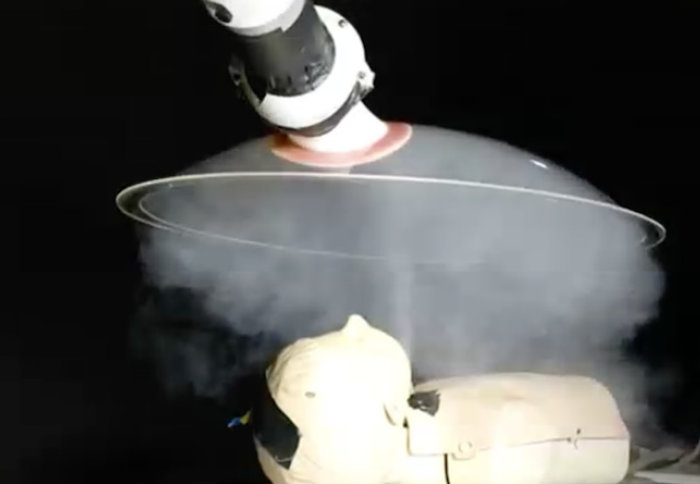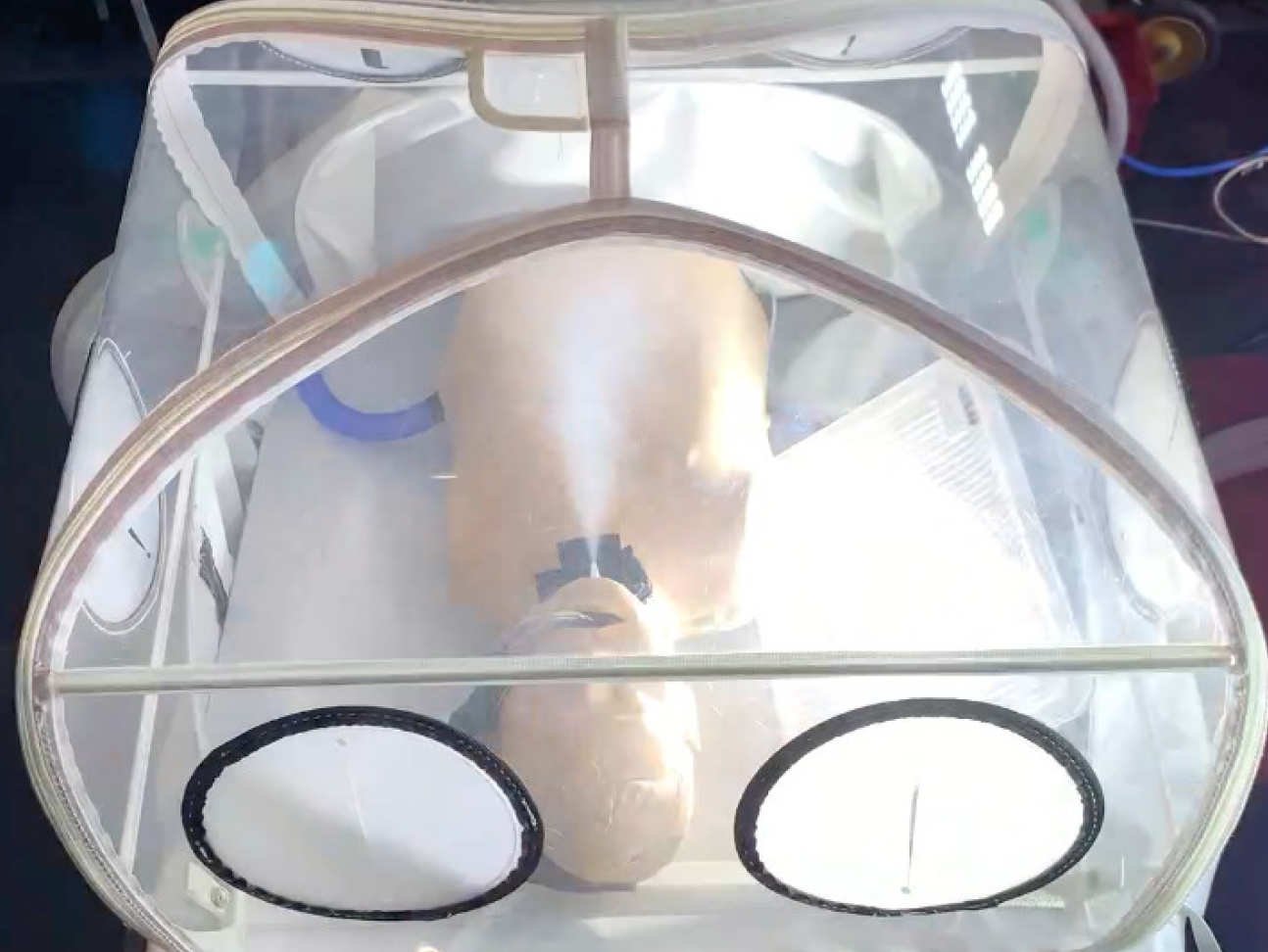

The 10 x 5 Wind Tunnel has re-opened for experimental testing of two shielding devices designed to help minimise the spread of COVID-19.
The devices are designed to protect healthcare workers from exposure to COVID-19 during procedures that can lead to large quantities of patient-generated aerosols.
To design and test the devices, academics from the Department of Aeronautics teamed up with the ear, nose and throat (ENT) surgical team from the Imperial College Healthcare NHS Trust, alongside designers from the Formula One team Mercedes-AMG Petronas.
Current tests focus on initial feasibility studies of the shields and hood devices, and the effect of different parameters on the behaviour of patient-generated aerosols during common procedures.

Aerosol generating procedures
Patients can produce a significant ejection of aerosols in common procedures such as airway intervention surgery, as well as routine care of tracheostomies and examinations of the upper airway using flexible video scopes through the nose.
In a tracheostomy, patients breathe through a tube in their neck. This tube requires periodic cleaning, whilst nasal examinations involve inserting a flexible video scope into the airways. Because both scenarios lead to the patient coughing, and in the latter case, sneezing, the need for protective devices is even more acute at the moment due to COVID-19.
While theatre staff can wear advanced forms of PPE during surgery, these are cumbersome and may be impractical for staff and patients to wear at all times. Therefore, the need for protective equipment around the patient becomes imperative.
Under the hood
Through the Department’s strong links with Formula One teams, Professor Denis Doorly, Professor of Fluid Mechanics, contacted the chief designer for the Mercedes-AMG F1 team, Dr John Owen. In turn, Dr Owen recruited a team from Mercedes led by Christian Fletcher.
Christian worked closely with Professor Doorly and ENT surgeons Miss Catherine Rennie, Mr Guri Sandhu, Professor Neil Tolley and Miss Charlotte McIntyre, to design devices in the form of shields or a partial patient enclosure.
“This exciting collaboration could significantly improve the safety of staff who regularly perform aerosol generating procedures, enabling us to adapt to working in a world with COVID-19.” Miss Catherine Rennie ENT Surgeon, Imperial College Healthcare NHS Trust
Initial testing of the mock-ups took place at Charing Cross Hospital, where a group of surgeons tried its usability in several surgical scenarios.
Initial computational fluid dynamics (CFD) studies by Mercedes and Pablo Ferrer-Bertomeu (an MEng project student in Aeronautics) suggested the solution of shield configurations; Mercedes then produced prototypes for a shield with extraction and a patient enclosure (or ‘aerocell’).
Professor Doorly mentions that the upper section of the 10 x 5 wind tunnel provided the ideal test facility for the prototypes: “We chose it because of the operational support and expertise on hand from Dr Kevin Gouder and Kostas Eleftheriou from the Wind Tunnel team. It also provides an ideal environment for smoke visualisation as we can turn on the wind tunnel fans to clear smoke between tests”.
The 10 x 5 wind tunnel was recently chosen by College as one of the pilot facilities to trial a staged re-opening of key laboratory facilities.
Further experimental testing is due to continue in the 10 x 5 later this month. If successful, it is envisaged that up to a hundred prototype hoods may be made for further evaluation in Imperial College hospitals.
Article text (excluding photos or graphics) © Imperial College London.
Photos and graphics subject to third party copyright used with permission or © Imperial College London.
Reporter

Tom Creese
Department of Aeronautics

Contact details
Email: press.office@imperial.ac.uk
Show all stories by this author


